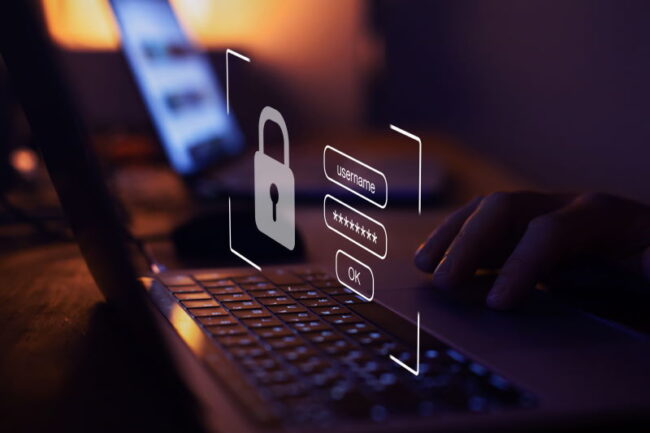The Cybersecurity Maturity Model Certification (CMMC) framework was developed by the U.S. Department of Defense (DoD) to help protect sensitive, controlled, unclassified information (CUI) found within the defense industrial base’s supply chain.
For companies contracting with the DoD or handling CUI data, achieving a certain CMMC certification level is mandatory to continue working with the DoD.
While implementing all the practices required by CMMC may seem daunting, taking a systematic approach and focusing first on the most critical areas can help businesses progress toward Compliance.
Here are five key steps defense contractors and companies handling CUI should focus on to effectively achieve CMMC certification for their organization:
1. Assess Current Compliance and Identify Gaps

The first step is to objectively analyze the current state of your company’s cybersecurity practices and Compliance with the CMMC framework. For all the CMMC process areas and capabilities, review what’s entailed—inventory existing controls, policies, procedures, tools, resources, and documentation.
A comparison of your organization’s state against the cmmc compliance requirements will make painfully obvious the gaps and deficiencies that currently exist. It is only with this broad view that one can understand the diverse places that need to be improved.
Hire a third-party assessor to undertake an objective gap analysis and vulnerability assessment to do this properly. The output will be a roadmap showing where to focus improvement efforts so an organization can efficiently achieve Compliance.
2. Establish Governance and Formal Policy Framework
Once gaps are identified, the next critical step is establishing a formal governance structure and implementing policies based on CMMC requirements. Designate those who will be responsible and accountable for security and compliance efforts.
Next, define roles like a Chief Information Security Officer or compliance team. Develop and approve documented policies covering critical areas like access control, configuration management, incident response, risk management, and auditing.
Management buy-in and commitment of resources are also essential for your business. With governance and policies in place, all employees will understand their responsibilities for protecting sensitive data and systems.
Policies establish the standards of care that will be rigorously evaluated during the certification process. This critical step lays the necessary foundation for achieving compliance with industry regulations and best practices. By defining clear guidelines and expectations, these policies ensure that all operations meet the required benchmarks for quality and safety.
Furthermore, the establishment of robust policies demonstrates a commitment to maintaining high standards, which not only facilitates the certification process but also instills confidence among stakeholders, including customers, employees, and regulatory bodies. Ultimately, well-crafted policies are essential for sustaining long-term compliance and operational excellence.
3. Implement Cybersecurity Controls and Best Practices

With an understanding of where gaps may exist and a formal governance structure, the organization can implement the specific cybersecurity controls and technical best practices that CMMC requires.
Areas to focus on include multi-factor authentication, encryption of data at rest and in transit, vulnerability scanning, security monitoring, and cybersecurity training.
Address technical capabilities using security solutions and tools developed for the SME business space. First, consider the controls in the highest risk areas: access control. Last, configurations can be monitored and hardened according to identified gaps and evolving standards.
4. Conduct Regular Audits, Testing, and Monitoring

Usually, Compliance is not a one-time business program. It requires continuous monitoring. Therefore, once new policies and technical controls are operational, it’s critical to validate they are working effectively and sustaining Compliance on an ongoing basis—schedule routine internal audits of security practices, documentation, and technical configurations.
Continually test systems and respond to vulnerabilities identified through monitoring activities. Remember to address any non-compliant findings through mitigation plans and process improvements.
Additionally, prepare for third-party assessments by conducting internal mock audits and pre-assessments. External auditors will evaluate your documentation, interview personnel, and examine technical controls. Therefore, be ready to provide evidence that written policies align with implemented safeguards.
Monitoring activities through tools will demonstrate the controls continue operating as intended. Regular audits confirm diligence in sustaining a mature security program.
5. Obtain Official CMMC Certification

When the internal assessment and external audits verify your organization has achieved the designated CMMC requirements, you’ll be ready to pursue the official certification. Register through a CMMC third-party assessment organization and schedule the certification review.
You will provide all required documentation demonstrating compliant processes, policies, and controls. Assist the assessors in verifying claims through interviews, system examinations, and testing protocols in action.
Upon completion, earn the certification for your company’s work with the DoD at the appropriate maturity level. With renewed certification required every three years, diligent security practices must be maintained, and continuous improvement must be made to sustain high levels.
Achieving CMMC certification opens the door to continue supporting the defense industrial base’s critical missions through responsible information sharing and cyber risk management practices.
Summary
Preparing for CMMC compliance takes diligence and persistence, but achieving certification leads to significant benefits for your business and customers. While the steps outlined above require time and resources, following them will ensure your cybersecurity programs satisfy DoD requirements. Visualize the greater opportunities that will open up once certified. Imagine new clients confident in your ability to safeguard controlled, unclassified data. Picture employees proud to work for an organization validated as committed to protecting national security.
See this effort as an investment, not an expense. The certification strengthens your reputation as a leader in cybersecurity besides the Department of Defense. It differentiates your brand from prospective civilian and commercial customers equally concerned with risk management.
